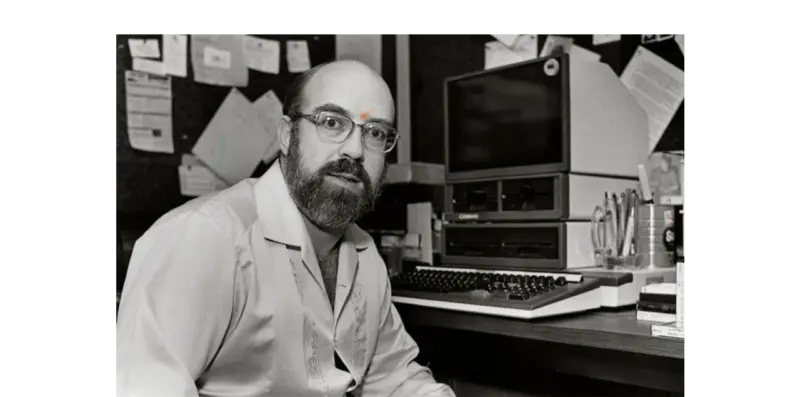How to Write a Good Feature Story
Sometimes you should go long. When you do, make sure you get it right
Keep it short.
That seems to be the conventional wisdom about corporate content these days. Make your point and convey the information required, but be quick about it, because people don’t have the attention span to stick with you even if they wanted to, which they don’t.
What might otherwise make a compelling story has too many writers worshipping at the shrine of Smart Brevity.
There’s a place for that, of course. So much of organizational communications can and should be reduced to a list of bullet points under headers like “What it Means” and “What you need to do.”
But on occasion, a story presents itself that would provide depth and understanding, take readers behind the scenes or introduce them to someone they should know, if only we gave them a little room to breathe.
The problem isn’t that no one wants to read a longer piece. It’s that they don’t want to read what doesn’t interest them, no matter what the length. The feature writer must persuade readers to take a chance, to lure them in with a promise of a greater reward if they give up an extra five minutes, or maybe 15.
That’s why good features are hard to write. The least skilled among us can manage the Axios template but try doing that with a feature—a profile of an expert or a description of a thorny problem solved—and the result is typically weak, uninspiring and shallow.

When it comes to writing features, Jon Franklin of the Baltimore Sun, who died in January, was one of the best in the business. He won two Pulitzer Prizes for his work, including the first Pulitzer for feature writing, in 1979, for “Mrs. Kelly’s Monster,” a two-installment account of a surgeon struggling to relieve a tangled knot of abnormal cells pressing against his patient’s brain.
An obit of Franklin by Brian Murphy of The Washington Post recounted that after the first installment, “readers flooded the Sun’s switchboard, demanding to know when the second part of the story would run. That came the next day.”
Franklin’s book, “Writing for Story: Craft Secrets of Dramatic Nonfiction,” published in 1986, offers advice and wisdom for feature writers, including communicators. Here are some of his tips, along with a few of our own.
1. Pick your spots. Not every story deserves the feature treatment, and in corporate communications, the list is even shorter. The story must be worth the time and effort, for the writer as well as the audience, Franklin tells us.
2. Find the complication and the tension. The elements of a good feature are a person, typically a sympathetic one, who encounters a problem (the complication) and works to overcome obstacles (the tension) to solve it.
3. Begin with the resolution and work backwards. Most news stories are endings without beginnings attached. The feature story focuses more on what it took to get to that end. As Franklin writes, “While many complications don’t have resolutions, resolutions almost always have complications.”
Too many corporate stories begin and end with a resolution: a new CEO is hired, a company engineer wins a major award, an organization holds a press conference to announce a breakthrough or a new product. Those are news stories; how we got there is a feature.
4. Outline before you write, but not the way you were taught. Franklin hated the outline format most of us learned in school, with all those Roman numerals and letters. He called it the “English Teacher’s Revenge.”
His approach is far simpler and forces you to think your story through: Take a complication—a design flaw, a supply chain issue, a crisis—and tell the story of how it developed and how it was solved.
5. Write the lede last. In a news story, the lede is, well, the news. In the inverted pyramid style, you’ll get everything you need in those first few paragraphs. Features are quite the opposite. Franklin writes, “Beginning at the beginning of a story is like trying to aim a spaceship at a particular crater and having it hit the target without even knowing what or where it is.”
In 2019, Pittsburgh International Airport opened a sensory room for children and adults with autism and other sensory sensitivities. Here’s a news story about the trend in airports and a feature about the airport’s new “quiet place.”
6. A rough draft is not a product, but a process. Writing a first, or rough draft of a feature story doesn’t mean it’s a sloppy version of the story. Focus on the organization of the piece. Are the sections of the story in the right order? Does each have a beginning, middle and end? And does each section lead you to the next?
7. Stories should flow, but not like calm rivers. A smooth flow from beginning to end would be boring. Stories should rise and fall. In a corporate profile, it’s not about how the CEO went to an Ivy League school, won some awards and got hired to run the firm.
No one’s life is a straight line. There are twists and turns along the way, the proverbial forks in the road, and the boulders that block the path. That’s where the stories live. Tell a few of those, to show how your subject’s current position and outlook were shaped by their experiences, good and bad.
8. Throw stuff away. We all tend to fall in love with our words. They’re ours, after all, and they’re beautiful. But do they help to advance the story or get in the way? Readers want to know that your cleverness will help them understand the resolution of the story.
A final word about length. A feature is not long because it has to be long. How long should our stories be? We get asked that question all the time, and there is no right answer. Declaring that everything must be 300 words or less is to deny that you have bigger stories to share. Writing everything in long form just makes everyone tired and cranky.
The only answer is the one we say all the time. Your stories should be as long as they need to be, and not a word longer.
Jim Ylisela is co-founder and senior partner of Ragan Consulting Group. He was raised by wolves to be a hard news guy. But he loves working with writers to help them shape a good feature.
Contact our client team to learn more about how we can help you with your communications. Follow RCG on LinkedIn and subscribe to our weekly newsletter here.






